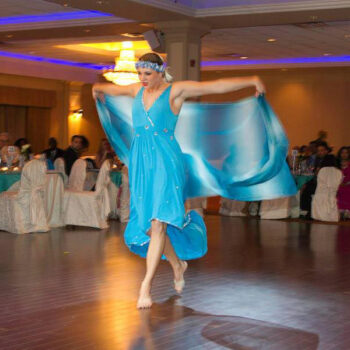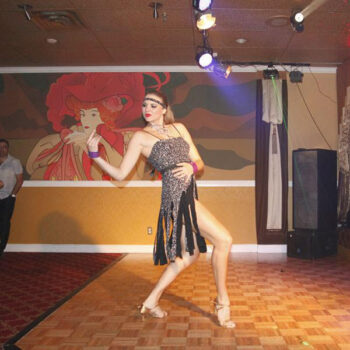With its beautiful fluidity, variety of techniques, and intriguing stories, contemporary dance has recently experienced a sharp increase in popularity. This article will examine contemporary dance's distinctive qualities, define its contrasts from modern dance, and delve into the style and fundamental words that underlie it. This will assist us in understanding the nuances of contemporary dance and teaching us the classic modern dance forms that have mesmerized audiences all over the world.
What is the meaning of contemporary dance?
The broad spectrum of styles and techniques that make up contemporary dance stress uniqueness, self-expression, and artistic discovery. It is a technique used by dancers to express feelings, stories, and abstract concepts through movement. Contemporary dance promotes artistic originality, pushing boundaries, and shattering conventions in contrast to traditional African dance traditions, which adhere to strict rules and predefined choreography.
What is the main idea of contemporary dance?
Contemporary dance's major goal is to convey societal and personal experiences while illustrating how our environment is always changing. Contemporary dancers can experiment with improvisation, build their movement language, and combine several dance genres to produce a unique artistic statement. Contemporary dance is a rich and potent art form because it aims to arouse strong emotions, stimulate cognition, and offer a stage for social criticism.
What are the 3 characteristics of contemporary dance?
- Fluidity and Dancer Ultimate Creative Freedom: Contemporary dance emphasizes the body's natural flow by embracing fluidity and freedom of movement. Dancers frequently use floor work, spirals, and sudden changes in direction to seamlessly transition between dances.
- Expressive Range: In contemporary dance, a wide range of expression is allowed, incorporating both delicate nuances and powerful movements. By utilizing intricate motions, emotive facial expressions, and dynamic body language, dancers may engage the audience more profoundly.
- Innovative Choreography: Contemporary dance is known for its innovative choreography that combines elements from various dance forms. Choreographers routinely experiment with non-traditional movement patterns, partnering strategies, and improvisation to produce distinctive and enthralling performances.
What is the difference between modern dance and contemporary?
Although the terms modern current dance and contemporary dance are commonly used interchangeably, they have different histories and practices. At the turn of the 20th century, a revolt against classical ballet gave rise to modern dance, which emphasized independence from predetermined techniques and the exploration of innovative forms of expression. Modern dance, ballet, jazz, and other dance genres have an impact on contemporary dance, which encompasses a wider variety of forms and techniques. It does it in a more adaptable, creative way that captures the feeling of the day.
Contemporary dance moves
Let's look together at the fundamental moves of this style for learning contemporary dance if you're wondering "How to dance contemporary style?" The core of this expressive art form is embodied in the great variety of contemporary dance techniques used in movements. Some typical contemporary dance methods are:
- Release and Contract: Muscles are contracted and released throughout this movement, giving the hip-hop dance a dynamic and elastic quality.
- Recovery and Fall: Dancers demonstrate resilience and agility in their motions as they experiment with controlled falls and surprising recoveries.
- Improvisation: Improvisation is frequently encouraged in contemporary dance, allowing professionally trained dancers to react impulsively to the music, the emotions, and their surroundings.
Types of contemporary dance styles
Classical concert dance styles encompass a diverse range of approaches and aesthetics, each with its unique characteristics and influences. Here is popular contemporary dance styles list:
Contemporary dance styles names
- Cunningham Technique: Developed by choreographer Merce Cunningham, this style emphasizes precise, isolated movements and explores the relationship between music and dance.
- Release Technique: Focusing on the connection between breath and movement, the release technique promotes fluidity, efficiency, and organic motion.
- Gaga: Created by Ohad Naharin, Gaga encourages dancers to explore sensations, imagination, and the connection between pleasure and effort in their movements.
Contemporary dances examples
- With a single male dancer surrounded by a group of female contemporary dancers, Maurice Bejart's famous contemporary dance performance "Bolero" mixes aspects of ballet and modern dance training.
- Christopher Bruce's poem "Rooster". This upbeat and theatrical contemporary dance piece, which is set to The Rolling Stones' music, uses strong movements to examine male identity and machismo.
- Alvin Ailey's "Revelations". A timeless masterpiece, "Revelations" is influenced by African-American spirituals and uses stunning choreography to illustrate the challenges, joys, and resiliency of the human spirit.
History contemporary dance
With pioneers like Isadora Duncan, Martha Graham, and Merce Cunningham challenging classical ballet and introducing new forms of movement expression to entire theatrical performances, contemporary dance can be traced back to the early 20th century. With time, contemporary dance has evolved, including components from various musical genres, visual arts, and cultural traditions. It is a living, evolving art form that continues to captivate viewers with its originality and emotional range.
Finally, modern-day contemporary dance is a prime example of a dynamic and intricate art form that respects uniqueness, creativity, and artistic expression. To tell important stories, the contemporary dance continues to push boundaries, arouse intense emotions, and employ a range of methods and fluid movements. Contemporary dance, whether it is probing the depths of human experience or challenging social norms, is an homage to the power of movement and the unlimited possibility of artistic expression.




